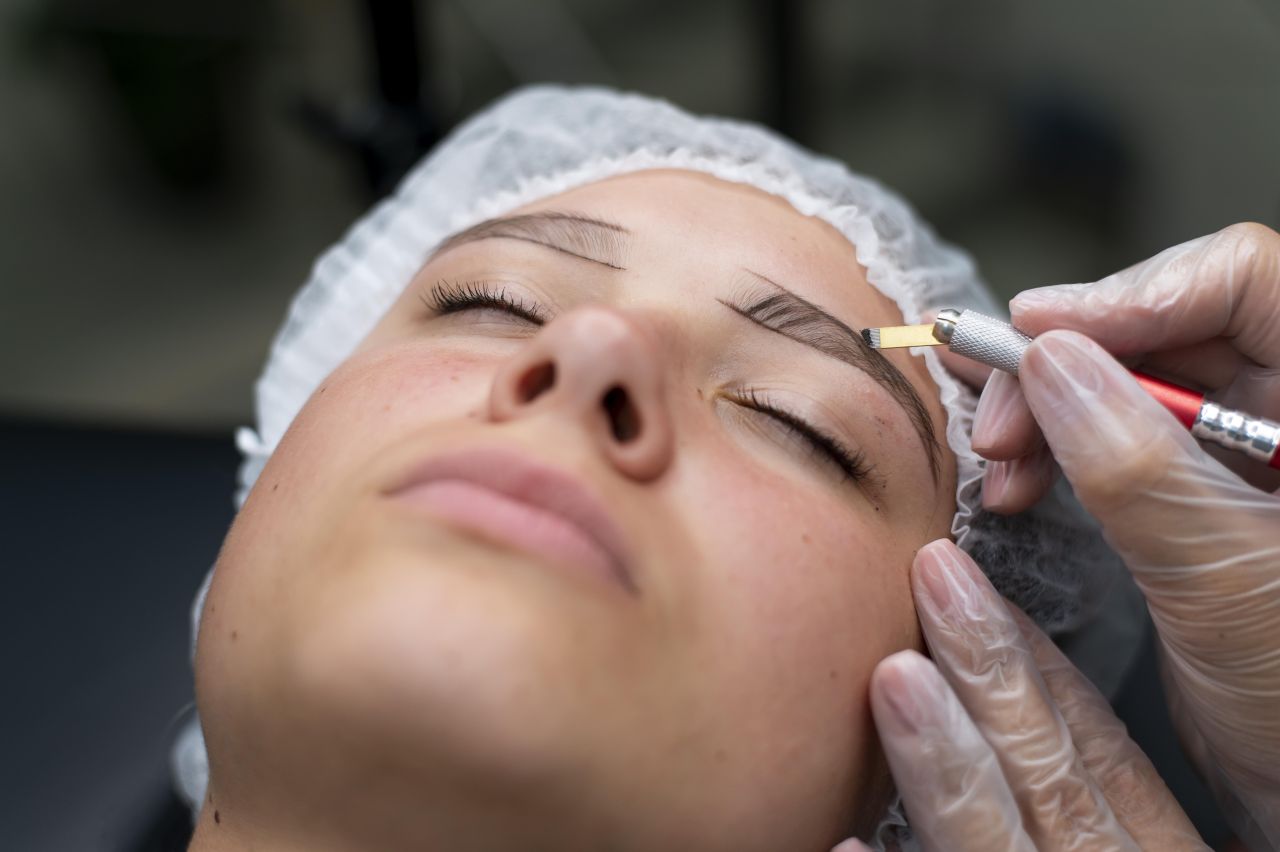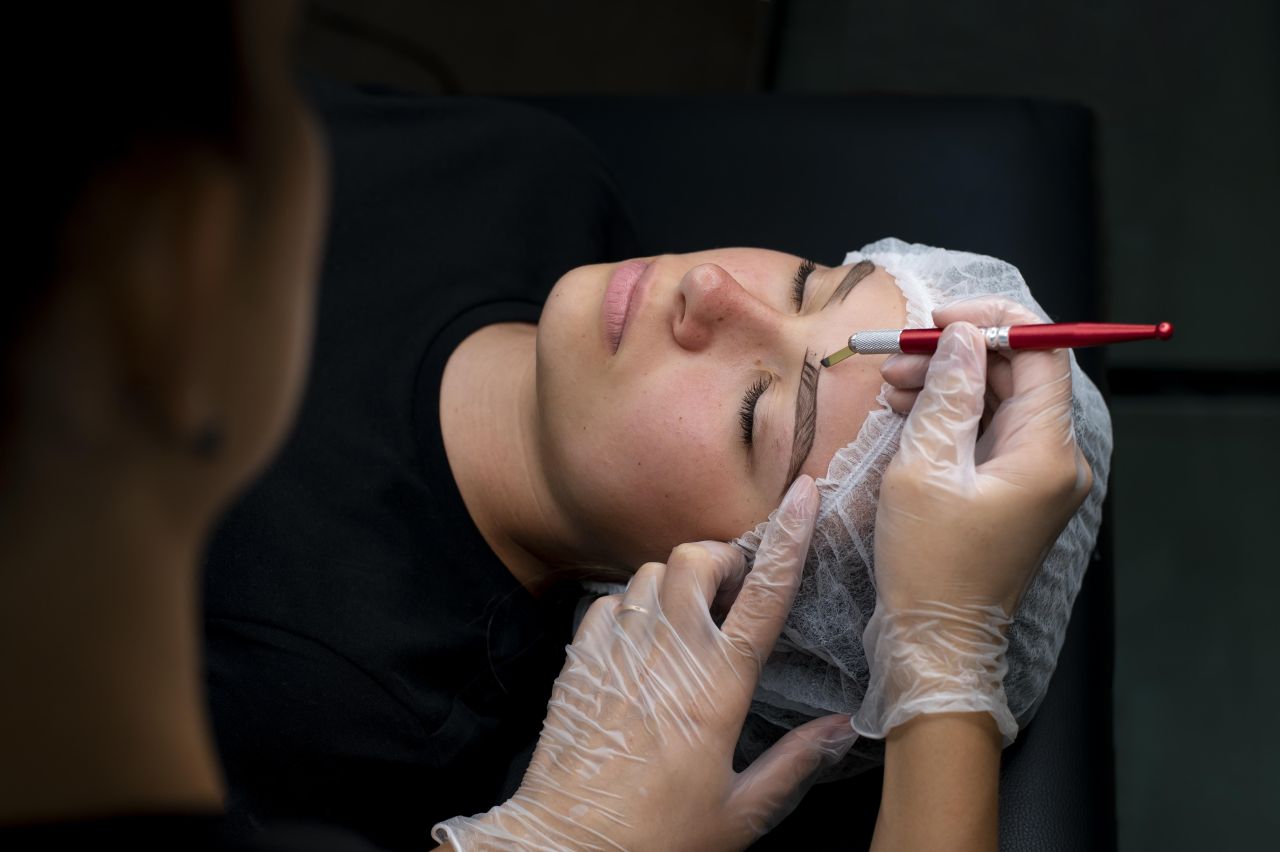Many individuals contemplating eyebrow tattooing are drawn to overseas options, especially in popular destinations like Bali, due to the significantly lower cost. However, while the appeal of a budget-friendly cosmetic procedure may seem enticing, it’s important to weigh several factors beyond just the price.
In 2024, understanding the potential differences in regulations, hygiene, materials, and long-term outcomes is crucial when deciding whether to go abroad for eyebrow tattooing or stick to a more controlled and regulated environment like Australia.
Let’s Get Straight To The Point
Eyebrow tattooing is cheaper overseas, especially in places like Bali, but the lower cost comes with potential risks. Differences in regulations, hygiene standards, and materials used are important factors to consider.
In Australia, cosmetic tattooing is strictly regulated, ensuring high safety and quality, with pigments that fade over time for flexibility. Overseas, less regulation can lead to lower hygiene standards and the use of permanent inks, which may cause long-term issues like colour migration.
While affordable, overseas options may lack the control and safety offered by accredited Australian salons, making it essential to prioritise health and long-term results.
Why is Eyebrow Tattooing Cheaper Overseas?
One of the most common reasons people consider having their eyebrows tattooed in countries like Indonesia is the lower cost. The price difference can be significant, but this disparity often comes with different standards of practice and regulations. Let’s explore why cosmetic tattooing overseas tends to be cheaper and why the results may last longer.
1. Different Regulations
One of the key factors influencing the price difference is the variation in regulatory standards between countries.
- Australia: Cosmetic tattooing in Australia is heavily regulated, ensuring safety and quality at all stages of the process. Australian tattoo artists are required to follow strict guidelines regarding the products used, hygiene practices, and aftercare advice.
- Overseas: Regulations can differ greatly. The same level of oversight may not always be present, and this can lead to lower costs, but potentially higher risks.
2. Hygiene Standards
The importance of hygiene cannot be overstated when it comes to any form of cosmetic procedure, particularly one that involves puncturing the skin.
- Australia: Salons in Australia must adhere to stringent hygiene standards. Equipment must either be single-use or thoroughly sterilised using approved methods like autoclaving.
- Other Overseas Locations: Hygiene standards may not be as strictly enforced. While some overseas salons maintain excellent hygiene practices, others may not meet the same level of care and control as seen in Australia.
3. Types of Materials Used
A major difference between eyebrow tattooing overseas and in Australia is the type of material used for the procedure.
- Pigments in Australia: In Australia, cosmetic tattooing is performed using pigments rather than inks. Pigments are specifically designed to fade over time, allowing for adjustments to be made as trends and preferences change.
- Inks Overseas: Many overseas artists, especially in parts of Asia, use inks instead of pigments. Inks are more permanent and can last much longer. However, this can be both an advantage and a disadvantage, as it might not provide the flexibility to alter the shape or colour in the future.
4. Depth of Tattooing
Another critical factor is the depth at which the ink or pigment is deposited.
- Australia: In Australia, the tattooing technique typically involves depositing the pigment at a shallower depth. This ensures a more natural appearance and reduces the risk of long-term issues like colour migration.
- Overseas: In some countries, eyebrow tattooing is performed similarly to body tattoos, with ink deposited deeper into the skin. While this can make the tattoo last longer, it also increases the chances of complications such as colour migration, where the ink spreads under the skin, leading to a blurred or distorted appearance over time.
Pigments vs. Inks: What’s the Difference?
The type of material used for tattooing makes a big difference in both the appearance and longevity of the results. In Australia, pigments are used for all cosmetic tattooing procedures, whereas many overseas artists use inks.
1. Pigments in Australia
- Natural fading: Pigments are designed to fade gradually over time, allowing for future adjustments.
- Flexible look: As trends and preferences change, you have the opportunity to refresh or modify the shape and colour of your brows.
- Shallower placement: Pigments are placed more superficially in the skin, reducing the risk of long-term complications like colour migration.
2. Inks Overseas
- Permanent result: Inks provide a more permanent solution, which might be attractive if you’re looking for a longer-lasting result.
- Deeper placement: Inks are often placed deeper in the skin, which can increase the likelihood of colour migration or changes in the tattoo’s appearance over time.
- Less flexibility: With permanent ink, you may be stuck with the same look for years, even if your preferences change.
The Depth of Tattooing and Its Impact
The depth at which the ink or pigment is deposited can have a significant effect on both the look and longevity of your eyebrow tattoo.
1. Shallower Deposits in Australia
- In Australia, pigments are typically deposited more superficially. This ensures that the tattoo looks natural and soft, blending seamlessly with your natural brow hairs.
- A shallower deposit also means that the tattoo will fade over time, allowing for future touch-ups and changes as needed.
2. Deeper Deposits Overseas
- Overseas artists may deposit the ink deeper into the skin, much like a traditional body tattoo. This deeper placement can result in a longer-lasting tattoo but also increases the chances of colour migration, where the ink spreads out under the skin, potentially leading to a blurred or distorted look.
Consider the Risks of Cheap Overseas Cosmetic Tattooing
While it may be tempting to take advantage of cheaper cosmetic tattooing services abroad, it’s essential to carefully weigh the potential risks. Some considerations include:
1. Shape and Colour Stability
- Permanent inks used in overseas procedures may change colour over time, potentially turning to unwanted hues like blue or green.
- The shape of the tattoo may also shift as your skin ages, making a permanent tattoo less ideal.
2. Hygiene Standards
- Hygiene practices vary greatly depending on the country and salon. It’s crucial to feel confident in the salon’s cleanliness and the practitioner’s qualifications before undergoing any procedure.
The Benefits of Choosing a Local Accredited Salon
There are several advantages to opting for a local, accredited salon in Australia for your cosmetic tattooing needs.
1. Safety and Quality Assurance
Australian salons must adhere to strict hygiene regulations and use only approved, high-quality materials. This gives you peace of mind knowing that your health and safety are prioritised.
2. Flexibility with Microblading and Cosmetic Tattooing
In Australia, the use of pigments allows for flexibility. You can refresh or modify your microblading or tattoo every 12-24 months, keeping your look current and in line with your evolving preferences.
Conclusion
While overseas eyebrow tattooing in locations like Bali may offer a more affordable option, it’s important to consider the potential risks and long-term impacts. The regulations, hygiene standards, and type of materials used overseas may not provide the same level of assurance as cosmetic tattooing in Australia. Ultimately, opting for a local accredited salon ensures a safer, more controlled procedure with the added benefit of flexibility in adjusting your brows as needed.
When deciding between cost and quality, it’s crucial to prioritise your health and long-term satisfaction with the results. For those seeking eyebrow tattooing in 2024, I personally recommend sticking to a local, professional environment where you can trust the process and enjoy the freedom to refresh your look whenever needed.
FAQs About Eyebrows Tattoo
How Long Does An Eyebrow Tattoo Last?
The longevity of an eyebrow tattoo varies depending on the technique and materials used. In Australia, pigments are designed to fade over 12-24 months, allowing for adjustments. Tattoos using ink, more common overseas, can last several years but may change color over time.
Does Eyebrow Tattooing Hurt?
The level of discomfort varies from person to person. Most professionals apply a numbing cream to minimize pain, but some mild discomfort is expected due to the needles used during the procedure.
What Is The Aftercare For Eyebrow Tattooing?
After the procedure, it’s important to keep the area clean, avoid water, sweating, and makeup on the brows for several days, and follow the artist’s aftercare instructions. Healing typically takes around 1-2 weeks, during which you may experience some peeling and color fading.
Are There Risks Involved With Eyebrow Tattooing?
While generally safe when done by professionals in a regulated environment, risks can include infection, allergic reactions, and color changes. Ensuring proper hygiene and quality materials is key to minimizing these risks.
What Is The Difference Between Microblading And Eyebrow Tattooing?
Microblading is a specific type of eyebrow tattooing that uses fine, hair-like strokes to create a more natural look. Traditional eyebrow tattooing can involve using either pigments or ink to create a more solid, filled-in appearance. Microblading tends to fade faster because the pigment is deposited more superficially in the skin.


